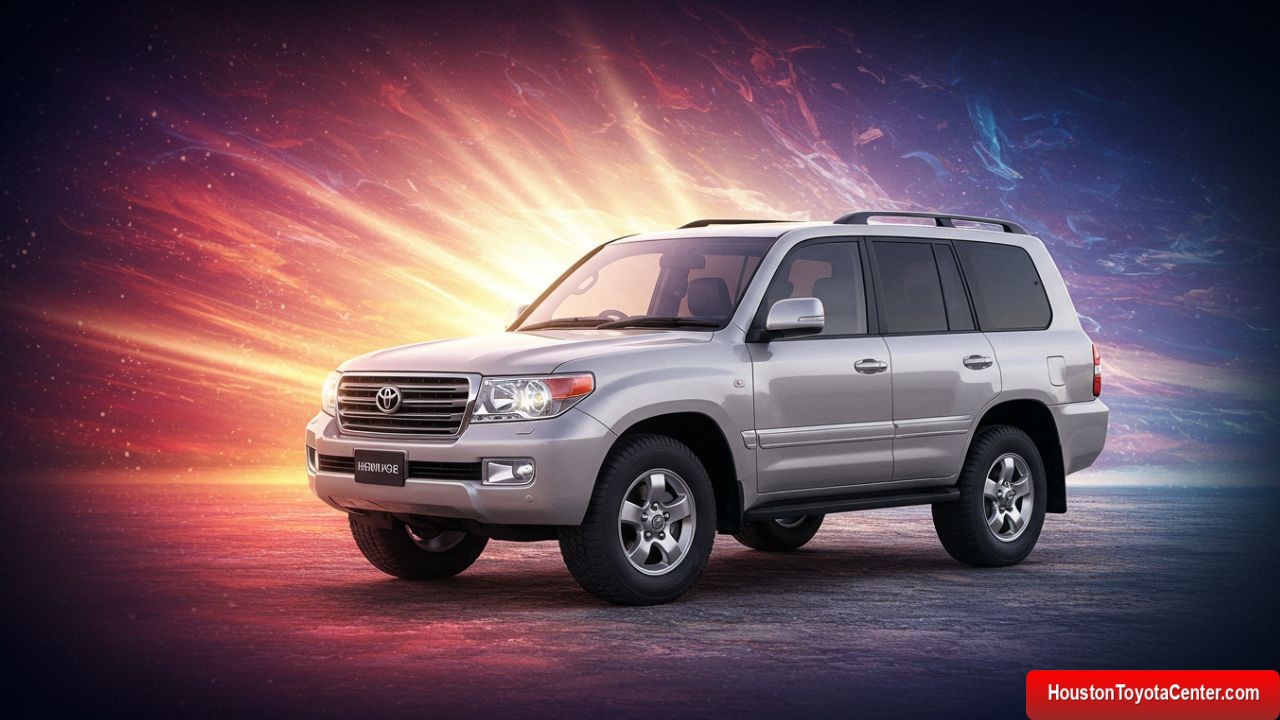The Toyota Land Cruiser is one of the most iconic and enduring vehicles in the history of the automotive industry. Known for its rugged durability, off-road capabilities, and reliability, the Land Cruiser has earned a reputation as a go-anywhere vehicle that can tackle the toughest terrains with ease. Since its inception in the early 1950s, the Land Cruiser has evolved through multiple generations, adapting to changing technologies and consumer demands while maintaining its core values. This article takes a deep dive into the heritage of the Toyota Land Cruiser, exploring its origins, development, and lasting legacy.
Origins: The Birth of a Legend
The Toyota Land Cruiser traces its roots back to the early 1950s, during the post-World War II era. Following the war, Japan was under American occupation, and the U.S. military required a reliable, locally manufactured utility vehicle. Inspired by the Willys Jeep used during the war, Toyota developed the Toyota Jeep BJ in 1951. Unlike the Jeep, which was compact and lightweight, the BJ was larger and powered by a 3.4-liter six-cylinder engine, offering more power and torque for rugged terrains.
In 1954, Toyota rebranded the BJ as the Land Cruiser, marking the beginning of an enduring legacy. The name reflected its ability to traverse land effortlessly, and the vehicle was soon adopted by various military and government agencies worldwide.
The Evolution of the Land Cruiser
Over the decades, the Toyota Land Cruiser has undergone numerous transformations, with each generation bringing new innovations while retaining its core off-road prowess.
FREE: Quickly identify and understand problems with your vehicle 🚘
CLICK HEREFirst Generation (1951-1955): The Toyota Jeep BJ and 20 Series
The first-generation Land Cruiser, the BJ, was a utilitarian vehicle designed primarily for military use. It featured a simple, rugged design and was equipped with a 3.4-liter inline-six engine producing 85 horsepower. The success of the BJ led to the introduction of the 20 Series in 1955, which offered improved comfort and a more refined design, making it suitable for civilian use.
Second Generation (1960-1984): The 40 Series – A Global Icon
The 40 Series Land Cruiser, introduced in 1960, became one of the most recognizable and beloved Land Cruiser models. It featured a boxy, rugged design and was equipped with powerful inline-six engines. The 40 Series was renowned for its durability and off-road capabilities, making it a favorite among adventurers, farmers, and military forces worldwide. With variations like the FJ40, it cemented its reputation as a go-anywhere vehicle.
Third Generation (1984-2001): The 60 and 70 Series – Comfort Meets Utility
Toyota introduced the 60 Series in 1980 to cater to a growing demand for more comfortable and luxurious off-road vehicles. This generation saw the introduction of improved interiors, air conditioning, and enhanced suspension systems, making the Land Cruiser a viable family vehicle.
Simultaneously, the 70 Series was launched in 1984 as a more rugged and utilitarian variant, retaining the off-road DNA of the earlier models. The 70 Series remains in production in some markets today, serving as a durable workhorse for industries and military applications.
Fourth Generation (1990-2007): The 80 and 100 Series – The Advent of Luxury
The 80 Series (1990-1997) marked a significant shift in the Land Cruiser’s design, offering advanced features such as full-time four-wheel drive, coil-spring suspension, and modernized interiors. This generation became a favorite among off-road enthusiasts and overlanders.
The 100 Series (1998-2007) took the Land Cruiser further into the luxury segment, with features like an independent front suspension, V8 engines, and high-end interiors. Despite the added luxury, Toyota ensured that the Land Cruiser retained its rugged performance and reliability.
Fifth Generation (2007-2021): The 200 Series – A Modern Off-Roader
The 200 Series was introduced in 2007, bringing state-of-the-art technology and enhanced performance. Equipped with advanced safety features, electronic off-road aids, and a powerful V8 engine, the 200 Series became a favorite among overland travelers and luxury SUV buyers. Toyota continued to improve the Land Cruiser’s capabilities while making it more comfortable for long journeys.
Sixth Generation (2021-Present): The 300 Series – The Future of the Land Cruiser
The latest 300 Series was launched in 2021, marking a new era for the Land Cruiser. Featuring a lightweight platform, improved fuel efficiency, and modern technology, the 300 Series maintains the vehicle’s legendary durability while meeting contemporary demands. The introduction of a twin-turbo V6 engine, advanced terrain management systems, and luxurious interiors has positioned the Land Cruiser as a high-performance off-road SUV that blends tradition with innovation.
The Land Cruiser’s Impact on Global Markets
The Toyota Land Cruiser has had a significant impact on global markets, with a presence in over 170 countries. It has been a preferred choice for governments, humanitarian organizations, and adventurers who require a reliable vehicle in harsh environments.
- Africa: Used by safari tour operators, NGOs, and military forces due to its durability and ability to navigate rough terrains.
- Middle East: A staple vehicle in desert regions, known for its resilience in extreme temperatures and sand dunes.
- Australia: A favorite among farmers and off-road enthusiasts, frequently seen in the Outback.
- United States: While not as dominant as in other markets, the Land Cruiser has a loyal following among overland travelers and collectors.
The Land Cruiser’s Legacy and Cultural Significance
The Toyota Land Cruiser has transcended its role as a mere vehicle, becoming a cultural icon. It represents adventure, reliability, and a spirit of exploration. Many Land Cruiser owners have driven their vehicles across continents, proving the model’s ability to withstand the harshest conditions.
Several Land Cruisers have achieved legendary status, including:
- The Million-Mile Land Cruiser: A vehicle that surpassed one million miles of travel, proving its unmatched durability.
- Expedition Vehicles: Used in polar expeditions and global overland adventures.
- Collector’s Items: Classic models like the FJ40 are highly sought after by collectors, often commanding high prices at auctions.
Conclusion: A Timeless Legend
The Toyota Land Cruiser has built a legacy of strength, reliability, and endurance over the past seven decades. From its origins as a military utility vehicle to its modern incarnation as a luxurious yet rugged off-road SUV, the Land Cruiser remains a testament to Toyota’s commitment to quality and innovation. As it continues to evolve, the Land Cruiser will undoubtedly remain an icon in the automotive world, cherished by enthusiasts and adventurers alike.
With its unparalleled reputation and loyal fanbase, the Land Cruiser’s legacy is far from over. Whether navigating the Australian Outback, traversing African savannas, or exploring remote mountain trails, the Land Cruiser stands as a symbol of resilience and adventure, ready to tackle the next great journey.


Leave a Reply